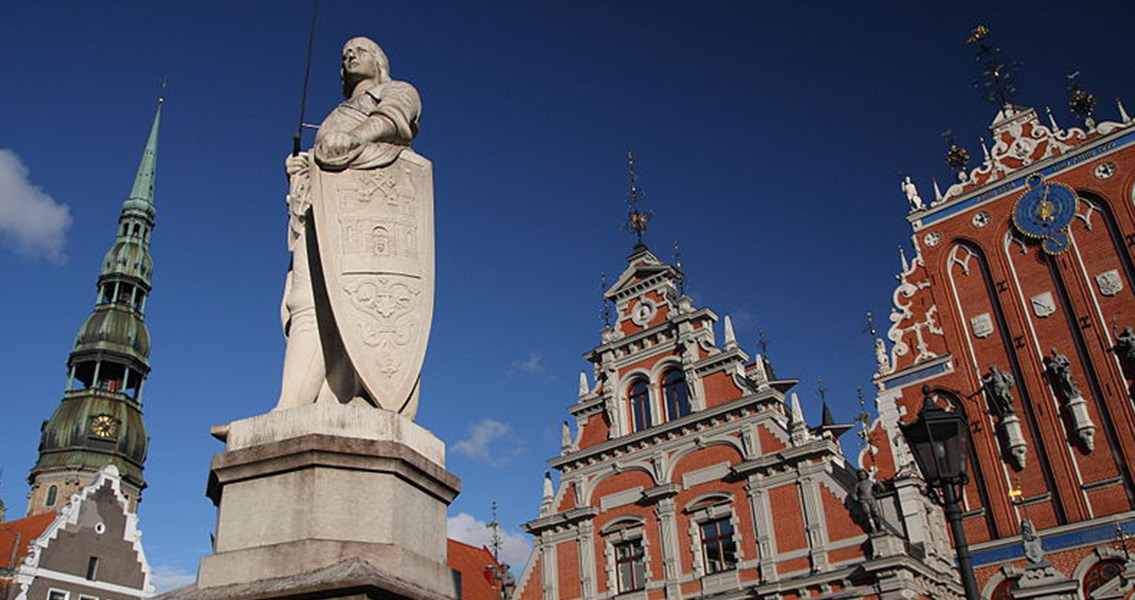<![CDATA[Tuesday 18th November sees Latvia celebrate its Proclamation Day. Cities, towns and villages throughout the country will hold special events to mark the occasion, with the festivities culminating in a huge parade and fireworks display in the capital Riga. The last few months have seen a lot of international media attention given to the 25th anniversary of the Baltic Way event. This was a hugely significant peaceful protest from the three Baltic countries, (Latvia, Lithunaia, and Estonia) against oppression under the Soviet Union. Similar coverage was given last week to the anniversary of the Fall of the Berlin Wall, again, another key event in the break up of the Soviet Union. As important as these events were however, it shouldn't be forgotten that the smaller countries of Eastern Europe have a rich history and identity that goes way back beyond the Cold War, and Latvia is a prime example of this. Latvia's Proclamation of independence came in 1918, in the immediate aftermath of the First World War. Since the previous winter a host of the country's leading politicians and intellectuals had been meeting to discuss the future of Latvia, as Europe was torn apart by conflict. From these initial meetings, the Latvian National Council was formed, which declared Latvia 'an autonomous state'. This was a crucial step, marking Latvia out as a distinct entity from Russia, even though men from both nations were fighting alongside each other on the Eastern Front. By October 1918, the National Council had launched a host of diplomatic missions abroad, in order to unofficially introduce Latvia's new sovereignty. On October 23rd the British foreign secretary Arthur James Balfour recognised the National Council as an independent legal institution, with a right to operate in Latvia. Internationally, this started to afford some much needed legitimacy to the cause of Latvian independence. On 17th November the main Latvian political parties met to finalise the details of the proclamation. The following day, in the Second National Theatre in Riga, the proclamation of the Republic of Latvia was made, and Latvia as an independent nation was born. The red and white Latvian flag, already an important cultural symbol, was chosen, and Karlis Ulmanis became the first prime minister of Latvia. The declaration was the culmination of years of growing Latvian nationalism. For much of Latvia's history the region had been under the control of other European states, and by the twentieth century it was part of the Russian Empire. Nevertheless, the emancipation of the serfs and a general broadening of access to education meant that from the middle of the nineteenth century onwards, a growing Latvian intelligentsia was forming, who were cementing ideas of a uniquely Latvian identity. Latvia's first government quickly ran into trouble. A major battleground of the First World War, when Russia signed a peace treaty with Germany in early 1918, Latvia became part of the German Empire. The Proclamation of Independence came after the German surrender, and was supported by the countries of western Europe as a means to create a buffer against the spread of Bolshevism. Although November 1918 was a shrewdly opportunistic time to proclaim independence, a Russian response was inevitable. The new nation soon found itself at war with the USSR, as the Bolshevik forces attempted to spread their influence through the former Russian Empire. By April 1919 almost all of Latvia had been captured by the Soviet military, and was declared a Soviet Socialist Republic. A counter attack was launched by an alliance of Latvian and German forces. The Soviet Union's military was pushed back through months of gruelling combat, before a peace treaty was signed on 3rd January 1920. By September 1921 Latvia was recognised as an independent, sovereign nation by the majority of the world, and was incorporated into the League of Nations. Between the World Wars Latvia confirmed its constitution, and enjoyed relative prosperity, particularly in the late 1930s, when it had some of the highest living standards in Europe. What's more, the country continued to draw upon and celebrate its own distinct cultural heritage, a heritage that still persists today. Of course, the signing of the covert Molotov-Ribbentrop Pact between the Soviet Union and Nazi Germany in 1939 would signal the beginning of years of occupation, first by the Soviet Union, then by Nazi Germany, and then the Soviet Union again. The history of Latvia, and other former Soviet Union countries, is often framed solely in terms of Soviet Occupation during the Cold War, followed by liberation. It is important not to forget however, that these countries often have long, fascinating histories that shouldn't be defined purely in relation to what happened between the end of the Second World War and the fall of the Soviet Union. Image courtesy of Magnus Manske]]>
The Anniversary of Latvia's Proclamation Day
